Identification of Two Kinds of Seawater Cultured Gray Pearls by Fourier Transform Infrared Spectroscopy and Ultraviolet-visible Absorption Spectroscopy
-
摘要: Akoya珍珠属生物矿化有机宝玉石,该类珍珠的矿物组成与微结构分析、定性与其颜色形成属性的鉴定方法尚为缺乏。本文通过光学显微镜、紫外可见吸收光谱、傅里叶变换红外光谱、能量色散X射线荧光光谱对具有白色或灰色珠核的两类Akoya灰色珍珠的珍珠层与珠核的结构特征及显色机制、紫外吸收光谱、微量金属元素赋存特征进行了对比研究。结果表明:①灰色珍珠的珠核有白色与灰色两类,两类珍珠的直径主要分布在5~9mm,珍珠层厚度约300~500μm;②两类珍珠的珍珠层和珠核的主体矿物组成均为生物文石,且两者的珍珠层中均富Sr贫Mn。③灰色的珠核具有明显的富Mn特征,且由于辐照使得Mn元素的价态升高并使得珠核致灰色,并导致整个珍珠呈现灰色;④紫外可见吸收光谱检测中,一般而言具有白色珠核的灰色珍珠在300~400nm波段可见明显的反射带,而具有灰色珠核的灰色珍珠在400~500nm波段可见明显的反射带。两类灰色珍珠皆为海水养殖珍珠,研究表明这两类珍珠的紫外吸收光谱的差异可作为初步评判灰色系珍珠是否经辐照改色的依据之一。要点
(1) 对两类灰色珍珠(以白色或灰色珠核区分)微结构形貌、微量元素和矿物组成开展对比性研究。
(2) 紫外可见吸收光谱差异可作为两类灰色珍珠筛选判别的依据。
(3) 本工作对有核珍珠颜色的形成与构色机制研究具有重要的补充。
HIGHLIGHTS(1) The structural morphology, trace element content and mineral composition of two kinds of seawater cultured gray pearls with white or gray nucleus were investigated.
(2) The difference of the ultraviolet-visible absorption spectra can be used as the basis for the discrimination of two kinds of gray pearls.
(3) This work is an important supplement to research of the color formation and color construction mechanism of nucleated pearls.
Abstract:BACKGROUNDAkoya pearl is a biomineralized organic gemstone. The mineral composition and microtextural analysis, and the identification method of color formation of this type of pearl are still lacking.OBJECTIVESTo identify natural gray pearls from treated-color gray pearls.METHODSThe spectroscopic and textural characteristics of two kinds of seawater cultured gray pearls with white or gray nucleus were comparatively investigated by optical microscope, Fourier transform infrared spectroscopy, ultraviolet-visible absorption spectroscopy, and energy dispersive X-ray fluorescence spectrometry.RESULTSThe gray pearls with white or gray nucleus had diameters from 5mm to 9mm, the thickness of 300-500μm. The nacreous layer and its corresponding nucleus of the two kinds of gray pearls were composed mainly of biological aragonite, and their corresponding nacreous layers were rich in Sr and poor in Mn. The pearl with the gray nucleus was rich in Mn. The valence state of Mn was increased due to irradiation, resulting in gray of the pearl core and the whole pearl. In general, the pearls with a white nucleus had an obvious reflection band from 300nm to 400nm in the ultraviolet-visible absorption spectra. On the contrary, those pearls with a light or heavy gray nucleus had a reflection band from 400nm to 500nm.CONCLUSIONSThe two types of gray pearls are all marine cultured pearls. The difference of ultraviolet absorption spectra of the two types of pearls can be used as a basis for judging whether the gray pearls are irradiatedly colored.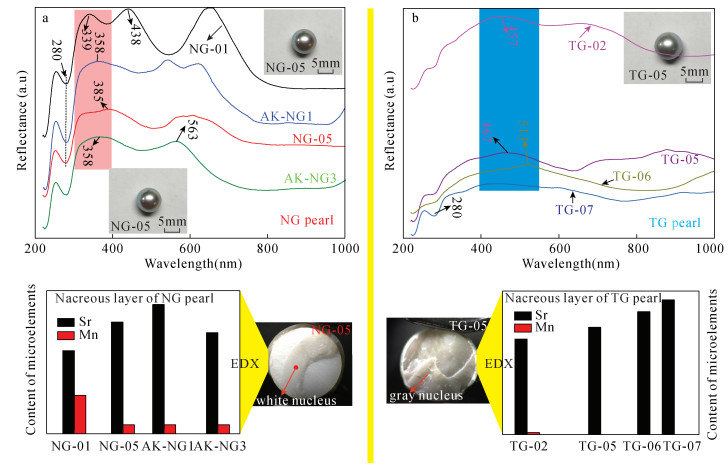
-
珍珠是以生物文石为主体矿物组成的一种有机宝石,也是珠宝市场中最常见的有机宝石之一[1]。近几年,珍珠流通与销售市场出现了一类主要由马氏贝贝壳所培育的直径大小在5~9mm的海水珍珠,因其接近正圆、光泽晶莹水润而引起了众多珍珠爱好者的关注[2-3],并美其名曰“Akoya珍珠”。Akoya珍珠其主要产地在中国(主要产于广西和广东)与日本(主要产于三重、雄本、爱媛县),该类珍珠颜色主要有白色与灰色系,部分白色系Akoya珍珠会伴有黄色或粉色调,其中的灰色或蓝灰色的Akoya珍珠,更是珍珠或相关珍珠饰品爱好者的新宠。由于该类珍珠的产量较少、相比同规格的淡水珍珠其光泽与圆度更高,因而具有更诱人的商业价值,使得市场上逐渐出现经改色处理的珍珠或仿珍珠冠以“Akoya珍珠”予以销售,严重损害了消费者与合法商家的正当权益。因此,为维护Akoya珍珠流通与销售市场的稳定、绿色健康发展,相关的鉴定方法亟待展开。
就珍珠颜色的改色处理而言,早在20世纪60年代日本学者Tsujii就成功地采用X射线、中子射线对珍珠或对插入母蚌中的珠核进行改色进而实现了珍珠颜色的改色[4]。随后相关珍珠的有机色素改色[5-9]、辐照改色[10-12]等处理技术层出不穷,同时相应的珍珠改色处理鉴别研究较为多见[13-18]。但截至目前,相关灰色类AKOYA珍珠的研究报道甚少。本工作中,以当前市场常见的具有白色或灰色内核为两类灰色(灰蓝色系)的Akoya珍珠为研究对象,就其光谱学、显色机制、珍珠层与珠核的结构特征及微量金属元素的赋存特征予以对比论述,以期为不同类型致色的灰色或灰蓝色的珍珠的鉴别分类提供检测依据与技术支撑。同时,本课题研究工作对于丰富该类珍珠的物化特性及其相似品的进一步认知具有较重要的补遗作用。
1. 实验部分
1.1 实验样品与处理
实验工作中涉及的两类灰色或灰蓝色珍珠样品,主要在浙江诸暨山下湖某珍珠销售市场采购或借用,少量样品购于香港珠宝展。珍珠样品呈正圆或近圆形,直径在5~9mm之间不等,样品总数约620余颗。其中含白色珠核的灰色珍珠约340颗(记为NG类灰色珍珠,下同),珠核为浅灰或深灰色的珍珠约280颗(记为TG类灰色珍珠,下同)。
为获取样品的珍珠层及珠核断面结构特征,部分样品经机械力破碎。实验样品经蒸馏水超声清洗5min后,自然风干,待测。
1.2 实验仪器与测试方法
观察两类珍珠的内核、整体珍珠的呈色与显微结构,研究两类珍珠内核与整体呈色机制的差异性。测试仪器型号为美国的iPhone 6与舜宇光学科技有限公司的Sdptop SZN型光学显微镜。测试条件:背景光源为可见光。
测试两类灰色珍珠样品的吸收光谱异同特征:利用珍珠相应的吸收光谱的吸收峰位或反射峰位特征进行两类珍珠的鉴别区分。测试仪器型号为广州标旗仪器有限公司GEM 3000型光谱仪。测试条件:附积分球,测量波长范围为200~1000nm。测试中单次测量时CCD采集的积分时间为90ms,平均次数为30次,平滑宽度为1。
珍珠的珍珠层及珠核中的微量金属元素定性定量分析:采用EDX 7000型X射线能谱仪(日本Shimadzu公司)测试。测试条件:电压50kV,电流1000μA,准直器5mm,测试模式:Quickeasy-Air-Metal,单个样品表面测量次数为5次,各元素含量的测试结果取其平均值。
珍珠层及珠核的无机物相分析:采用Bruker Tensor 27型傅里叶变换红外光谱仪(德国Bruker公司)分析。采用与KBr共混研磨压片法,其中待测粉体与KBr的质量比约1:200,扫描范围4000~400cm-1,分辨率±2cm-1,背景与样品扫描次数分别为128次。
2. 结果与讨论
2.1 两类灰色珍珠及其断面的形貌特征
就两类灰色珍珠的表观呈色而言,无明显差异。被机械力破碎后,可见两类灰色珍珠都为典型的有核珍珠,但两类珍珠的珠核与结构存在明显的区别。以样品NG-05与TG-05为例,表现在:首先,NG类灰色珍珠的珠核为白色,外层珍珠层为灰色(图 1c),该类珍珠的呈色特点与前人报道的海水养殖金色珍珠、海水养殖黑色珍珠的光学结构特征一致,即珍珠的颜色是由外层的珍珠层的颜色决定[3, 17]。相比之下,TG类灰色珍珠的外层珍珠层为浅色或近白色,但珠核为灰色,如图 1的e、f所示,该类珍珠外部所呈现的灰色源于内部的灰色珠核。据文献报道,上述TG类珍珠中灰色的珠核多为辐照致色,且进一步归因为珍珠层中的有机成分及Mn元素在辐照过程中的氧化变色所致[18]。与此同时,内核的颜色深浅与辐照源的辐照强度呈正相关性[10-12];其次,进一步观察可见,前者NG类白色的珠核表面及外层的珍珠层与内核的接触面都有褐色的包覆层(图 1b),且该褐色包覆层在所有NG类灰色珍珠中皆存在。
同时,在两类灰色珍珠中,珍珠层的厚度约300~500μm,参比现行的珍珠分级国家标准GB/T 18781—2008而言,该类珍珠的珍珠层厚度较薄,其级别属于中或薄。需说明的是,因珍珠作为一类珠宝首饰品,应有其使用的长久性、美观性,但该类珍珠的珍珠层厚度较薄,在日常佩戴过程中较容易造成外层珍珠层的磨损、破裂,但能受到广大珠宝爱好者的接受。因此,相关的珍珠分级标准是否需修改有待进一步商榷。
2.2 珍珠的紫外可见(UV-Vis)吸收光谱特征
分别对NG与TG两类灰色珍珠样品进行UV-Vis吸收光谱测试。以几颗典型的NG类灰色珍珠样品的UV-Vis吸收光谱为例,如图 2的a和b所示。可见不同颗粒NG类灰色珍珠样品的吸收峰位各不相同,即个体差异性较大。但就不同颗粒珍珠样品的反射峰位而言,以淡海水类珍珠或贝壳珍珠层的UV-Vis吸收光谱共同存在的约280nm处的特征吸收峰为参考[19],被检测的NG类珍珠样品的吸收光谱的紫外可见光波段,靠近280nm处的第一个反射峰位的波长均小于400nm。相比之下,对TG类灰色珍珠样品进行UV-Vis吸收光谱测试可见(图 2c),TG类灰色珍珠样品的吸收光谱在紫外可见光方向上,与280nm处的特征吸收紧邻的第一个反射峰位波长均大于400nm,与NG类灰色珍珠反射特征峰位具有明显差异。
但需注意的是,在对同一颗TG类典型样品(以TG-01为例)的不同位置进行UV-Vis吸收光谱测试,发现该样品吸收光谱的300~400nm区间,表面位置如P1~P5处测试点未见明显的反射峰,但在其他位置处如P6~P9对应的吸收谱图出现了明显的反射峰位(如P6点在368nm处出现反射,P8点在381nm处出现反射),如图 3所示。可见同一颗珍珠的UV-Vis光谱既有NG类又有TG类珍珠的光谱特征,初步认为由于辐照存在一定的方向性,使得经不同辐照程度影响的珍珠表面表现出相异的光谱特征。
2.3 两类灰色珍珠的珍珠层与珠核的红外光谱(FTIR)特征
为进一步对比上述两类珍珠的珍珠层或其相应的珠核的矿物组成是否存在相异性,进而为两类珍珠的鉴别提供指纹性鉴定依据,对上述两类灰色珍珠的珍珠层与珠核进行红外光谱物相分析(图 4a)。可见NG与TG类珍珠的珍珠层或相应的内核中无机物相组成均为生物文石,与前人就珍珠的无机物相组成的检测结论一致[20-22]。同时,对比两类灰色珍珠的珍珠层或珠核的红外吸收光谱特征(图 4b),进一步发现两类珍珠的珍珠层中文石的CO32-的v2谱带(面外弯曲振动)相对各自的珠核文石均出现明显的频率位移,与本项目组前期对金珠珠核与珍珠层的红外光谱检测结论一致[23-24],究其原因可能与有核珍珠的珠核多采用贝壳为原料,而贝壳中文石CO32-的v2谱带相比珍珠层文石出现明显的频率红移有关[25]。
2.4 珍珠层与珠核中Sr与Mn元素含量特征
在传统的宝石学鉴定、产地研究中,多依据微量元素的种类或含量进行宝石的天然或合成属性的定性或进行其产地的溯源等研究。在本工作中,旨在探究两类灰色珍珠的珍珠层或珠核中的微量元素是否存在差异性,进而为区分两类珍珠的宝石学差异提供鉴别依据。对NG与TG两类珍珠的珍珠层的外表面与珠核的断面进行了微量金属元素的定性定量分析(能量色散X射线荧光光谱测试),并以相关珍珠层中较多被关注的Sr与Mn元素含量特征作为研究对象,其结果如图 5所示(纵坐标为相应的元素含量,%)。
由图 5的a和b可见,NG与TG两类灰色珍珠的珍珠层中皆出现富Sr、贫Mn特征,与前人就典型的海水养殖珍珠的珍珠层中富Sr、贫Mn的赋存特征完全一致[26-29],因此该两类珍珠均可定性为海水养殖珍珠。进一步对两类灰色珍珠的珠核予以检测,发现TG类珍珠的珠核具备典型的淡水贝壳的珍珠层中Mn与Sr元素含量特征即富Mn、贫Sr[28]。据文献报道,珠核经辐照处理变色机制主要源于其组成中的Mn2+在射线辐照下氧化致色有关,因此TG类灰色珍珠中选用淡水贝壳为珠核有其明显的目的性即容易使珠核致色。相比之下,NG类珍珠的珠核中Sr与Mn元素的含量大小近乎相同,可见,两类珍珠的珠核有着极明显的元素含量赋存差异性。
3. 结论
对具有白色(NG类)或灰色珠核(TG)两类灰色系珍珠的结构特征及显色机制、谱学特征、微量金属元素的赋存特征进行对比研究表明,两者珍珠层厚度约300~500μm。NG类灰色珍珠所呈现的灰色主要源自外层灰色的珍珠层,且NG类珍珠的灰色珍珠层呈色机理及珠核外的褐色包覆层有机相研究有待进一步展开。相反,TG类灰色珍珠的灰色源自珠核。
一般而言,NG类灰色珍珠在其紫外可见吸收光谱的300~400nm区间存在明显的反射峰位,且该类珍珠的整个珍珠层表面不同测试点的吸收谱图特征基本一致。相比之下,大部分TG类珍珠对应的紫外可见吸收光谱的300~400nm区间无反射峰位,该特征可为NG与TG类珍珠的定性与分类提供依据。此外,NG与TG类灰色珍珠的珍珠层及相应的珠核的主体矿物组成均为生物成因文石。两类珍珠的珍珠层均具有富Sr、贫Mn特征,皆为典型的海水养殖珍珠,但珠核中Sr与Mn元素的含量具有极明显的差异性,此特征可以作为初步评判该类型珍珠是否经辐照改色的依据。
-
-
张蓓莉.系统宝石学[M].北京:地质出版社, 1997. Zhang B L.Systematic Gemmology[M].Beijing:Geological Publishing House, 1997.
Kripa V, Mohamed K S, Appukuttan K K, et al.Pro-duction of Akoya pearls from the southwest coast of India[J].Aquaculture, 2007, 262(2):347-354. http://cn.bing.com/academic/profile?id=586490d17e3e280f32f7263040d25edc&encoded=0&v=paper_preview&mkt=zh-cn
宋彦军, 张义丞, 武云龙, 等.银灰色马氏贝海水珍珠的光谱学特征与颜色成因[J].矿物学报, 2017, 37(6):712-716. http://www.cnki.com.cn/Article/CJFDTotal-KWXB201706005.htm Song Y J, Zhang Y C, Wu Y L, et al.Spectra characteristics and coloration mechanism of silver-gray color seawater cultured pearls produced by Pinctada Martensii[J].Acta Mineralogica Sinica, 2017, 37(6):712-716. http://www.cnki.com.cn/Article/CJFDTotal-KWXB201706005.htm
Tadashi T.The change of pearl colors by the irradiation with γ-ray or neutron ray[J].Journal of Radiation Research, 1963, 4(2-4):120-125. doi: 10.1269/jrr.4.120
李立平, 杨明星.带染色核海水养殖珍珠的鉴别[J].宝石和宝石学杂志, 2005, 7(2):7-9. doi: 10.3969/j.issn.1008-214X.2005.02.002 Li L P, Yang M X.Identificatin of sweater cultured pearls with dyed nucleus[J].Journal of Gems & Gemmology, 2005, 7(2):7-9. doi: 10.3969/j.issn.1008-214X.2005.02.002
亓利剑, 黄艺兰, 曾春光.各类金色海水珍珠的呈色属性及UV-Vis的反射光谱[J].宝石和宝石学杂志, 2008, 10(4):1-8. doi: 10.3969/j.issn.1008-214X.2008.04.001 Qi L J, Huang Y L, Zeng C G.Colouration attributes and UV-Vis reflection spectra of various golden seawater cultured pearls[J].Journal of Gems & Gemmology, 2008, 10(4):1-8. doi: 10.3969/j.issn.1008-214X.2008.04.001
刘雯雯, 李立平.珍珠的金黄色染色工艺及染色珍珠的鉴定[J].宝石和宝石学杂志, 2007, 9(4):33-36. doi: 10.3969/j.issn.1008-214X.2007.04.008 Liu W W, Li L P.Technology and identification of golden dyed pearls[J].Journal of Gems & Gemmology, 2007, 9(4):33-36. doi: 10.3969/j.issn.1008-214X.2007.04.008
董珺慧, 王以群, 史凌云, 等.黑色珍珠的无机染色[J].华东理工大学学报(自然科学版), 2013, 39(2):172-177. doi: 10.3969/j.issn.1006-3080.2013.02.011 Dong J H, Wang Y Q, Shi L Y, et al.Inorganic dyeing of black pearl[J].Journal of East China University of Science and Technology (Natural Science Edition), 2013, 39(2):172-177. doi: 10.3969/j.issn.1006-3080.2013.02.011
郭倩, 徐志.天然金珍珠和染色金珍珠的致色因素和鉴定分析方法研究进展[J].岩矿测试, 2015, 34(5):512-519. doi: 10.15898/j.cnki.11-2131/td.2015.05.003 Guo Q, Xu Z.Coloring factors of naturall and dyed golden pearls and research progress on their identification methods[J].Rock and Mineral Analysis, 2015, 34(5):512-519. doi: 10.15898/j.cnki.11-2131/td.2015.05.003
Matsuda Y.Effects of γ-irradiation on color and fluo-rescence of pearls[J].Civil Engineering Infrastructures Journal, 1988, 27(2):235-239.
Kim H Y, Hanifehpour Y, Narayan A, et al.Structural studies and optical properties of pearl nucleus irradiated by γ-ray[J].Radiation Effects and Defects in Solids, 2013, 168(9):696-704. doi: 10.1080/10420150.2012.761997
Kim H Y, Min B K, Jeong W G.Effects of γ-ray irra-diation on the color of pearl nucleus[J].Journal of Architecture Planning & Environmental Engineering, 2011, 27(3):247-252.
Kim Y C, Choi H, Lee B, et al.Identification of irradia-ted south sea cultured pearls using electron spin resonance spectroscopy[J].Gems & Gemology, 2012, 48(4):292-299.
Elen S.Update on the identification of treated golden south sea cultured pearls[J].Gems & Gemology, 2002, 38(2):156-159. http://www.wanfangdata.com.cn/details/detail.do?_type=perio&id=d03c9cbb6b73c13359f9881655693b30
Elen S.Spectral reflectance and fluorescence characteri-stics of natural-color and heat-treated golden south sea cultured pearls[J].Gems & Gemology, 2001, 37(2):114-123. https://www.researchgate.net/publication/274418269_Spectral_Reflectance_and_Fluorescence_Characteristics_of_Natural-Color_and_Heat-Treated_Golden_South_Sea_Cultured_Pearls
陈育, 郭守国, 史凌云.光谱学在金黄色海水珍珠鉴定中的应用[J].光学学报, 2009, 29(6):1706-1709. http://d.old.wanfangdata.com.cn/Periodical/gxxb200906050 Chen Y, Guo S G, Shi L Y.Application of spectroscopy in identification of golden saltwater pearl[J].Acta Optica Sinica, 2009, 29(6):1706-1709. http://d.old.wanfangdata.com.cn/Periodical/gxxb200906050
严俊, 陶金波, 邓小琼, 等.金色海水养殖珍珠异常的UV-Vis反射与FTIR光谱特征[J].光谱学与光谱分析, 2014, 34(5):1206-1210. doi: 10.3964/j.issn.1000-0593(2014)05-1206-05 Yan J, Tao J B, Deng X Q, et al.The unique reflection spectra and IR characteristics of gold-color seawater cultured pearl[J].Spectroscopy and Spectral Analysis, 2014, 34(5):1206-1210. doi: 10.3964/j.issn.1000-0593(2014)05-1206-05
李立平, 陈钟惠.养殖珍珠的辐照处理[J].宝石和宝石学杂志, 2002, 4(3):16-21. doi: 10.3969/j.issn.1008-214X.2002.03.004 Li L P, Chen Z H.Irradiation treatment of cultured pearls[J].Journal of Gems & Gemmology, 2002, 4(3):16-21. doi: 10.3969/j.issn.1008-214X.2002.03.004
Yan J, Zhang J, Tao J B, et al.Origin of the common UV absorption feature in cultured pearls and shells[J].Journal of Materials Science, 2017, 52(14):8362-8369. doi: 10.1007/s10853-017-1111-9
张刚生, 李浩璇.生物成因文石与无机成因文石的FTIR光谱区别[J].矿物岩石, 2006, 26(1):1-4. http://www.wanfangdata.com.cn/details/detail.do?_type=perio&id=kwys200601001 Zhang G S, Li H X.The FTIR spectra difference between biogenic and abiogenic aragonites[J].Journal of Mineralogy and Petrology, 2006, 26(1):1-4. http://www.wanfangdata.com.cn/details/detail.do?_type=perio&id=kwys200601001
Pokroy B, Quintana J P, Caspi E N, et al.Anissotropic lattice distortions in biogenic aragonite[J].Natural Materials, 2004, 3(12):900-902. doi: 10.1038/nmat1263
Pokroy B, Fieramosca J S, von Dreele R B, et al.Atomic structure of biogenic aragonite[J].Chemistry Materials, 2007, 19(13):3244-3251. doi: 10.1021/cm070187u
严俊, 刘培钧, 张旭, 等.海水养殖金色珍珠独特的吸收光谱及其微结构[J].上海大学学报(自然科学版), 2014, 20(6):707-714. doi: 10.3969/j.issn.1007-2861.2014.06.006 Yan J, Liu P J, Zhang X, et al.Unique absorption spectrum and microstructure characteristics of golden seawater cultured pearl[J].Journal of Shanghai University (Natural Science), 2014, 20(6):707-714. doi: 10.3969/j.issn.1007-2861.2014.06.006
严俊, 胡仙超, 王巨安, 等.不同颜色的淡水养殖珍珠呈色机理研究[J].岩矿测试, 2013, 32(2):263-268. doi: 10.3969/j.issn.0254-5357.2013.02.014 Yan J, Hu X C, Wang J A, et al.Investigation on the coloring mechanism of freshwater cultured pearls with different color[J].Rock and Mineral Analysis, 2013, 32(2):263-268. doi: 10.3969/j.issn.0254-5357.2013.02.014
张刚生, 丁世磊, 贾太轩, 等.珍珠及贝壳珍珠层文石的异常红外光谱特征[J].宝石和宝石学杂志, 2005, 7(3):7-9. doi: 10.3969/j.issn.1008-214X.2005.03.002 Zhang G S, Ding S L, Jia T X, et al.Unusual characteristics of FTIR spectra aragonites from nacreous layers of pearls and bivalve shells[J].Journal of Gems & Gemmology, 2005, 7(3):7-9. doi: 10.3969/j.issn.1008-214X.2005.03.002
Habermann D, Banerjee A, Meijer J, et al.Investigation of manganese in salt- and freshwater pearls[J].Nuclear Instruments and Methods in Physics Research B, 2001, 181(1):739-743. doi: 10.1016-S0168-583X(01)00353-6/
木士春, 马红艳.养殖珍珠微量元素特征及其对珍珠生长环境的指示意义[J].矿物学报, 2001, 21(3):551-553. doi: 10.3321/j.issn:1000-4734.2001.03.069 Mu S C, Ma H Y.Trace element characteristics of cultured pearls and their indicating meaning for growth environment of pearls[J].Acta Mineralogica Sinica, 2001, 21(3):551-553. doi: 10.3321/j.issn:1000-4734.2001.03.069
兰延, 张珠福, 张天阳.荧光能谱技术鉴别淡水珍珠和海水珍珠的应用[J].宝石和宝石学杂志, 2010, 12(4):31-35. doi: 10.3969/j.issn.1008-214X.2010.04.006 Lan Y, Zhang Z F, Zhang T Y.Identification of saltwater cultured pearls and freshwater cultutred pearls by using X-ray fluorescence spectroscopic technique[J].Journal of Gems & Gemmology, 2010, 12(4):31-35. doi: 10.3969/j.issn.1008-214X.2010.04.006
Zhang E, Huang F Q, Wang Z T, et al.Characteristics of trace elements in freshwater and seawater cultured pearls[J].Spectroscopy and Spectral Analysis, 2014, 34(9):2544-2547. http://cn.bing.com/academic/profile?id=79194f0e64adad9eaf01e979bab66eac&encoded=0&v=paper_preview&mkt=zh-cn
-
期刊类型引用(5)
1. 高金平,李家乐,白志毅. 三角帆蚌外套膜有核珍珠与Akoya珍珠理化特征比较鉴定. 中国宝玉石. 2023(05): 2-11+25 .  百度学术
百度学术
2. 刘晋华,张俭,严雪俊,黄雪冰,徐江,蒋欣然,严俊. 多米尼加与墨西哥蓝珀光致发光-拉曼光谱及微量元素赋存特征研究. 岩矿测试. 2022(02): 272-280 .  本站查看
本站查看
3. 方诗彬,蒋扬名,严俊,严雪俊,周扬,张俭. 常见灰色珍珠的紫外可见漫反射光谱类型及其灰色成因. 光谱学与光谱分析. 2022(12): 3703-3708 .  百度学术
百度学术
4. 方飚,严雪俊,孙青,吴静怡,李淑华,严俊. 应用扫描电镜-红外与反射光谱研究海水灰色Akoya珍珠特异的矿化微结构特征. 岩矿测试. 2021(01): 42-49 .  本站查看
本站查看
5. 贾楠,陈晶晶,罗跃平,王妍,范澄兴. Akoya灰珍珠与处理灰珍珠的鉴别特征. 中国宝玉石. 2021(02): 19-26 .  百度学术
百度学术
其他类型引用(2)



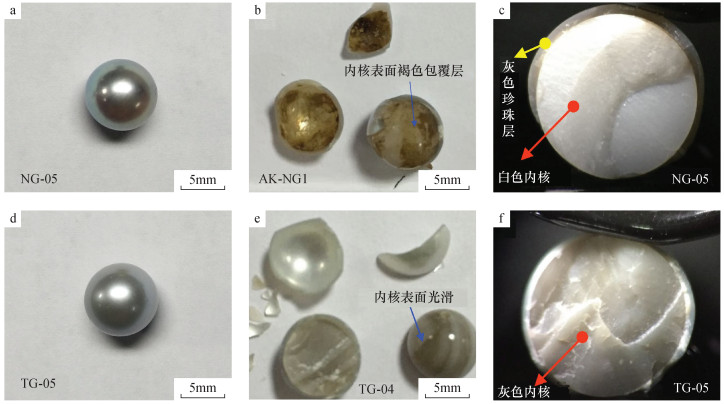
 下载:
下载:
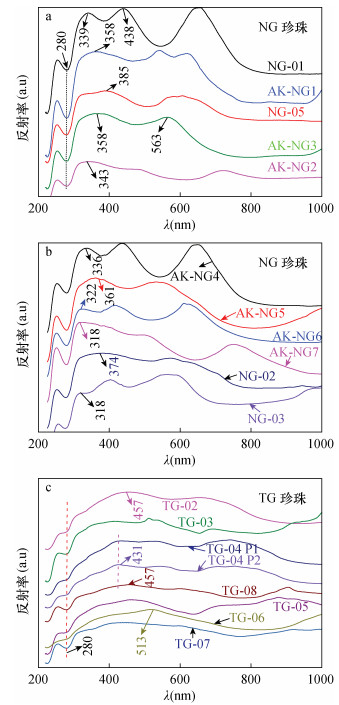
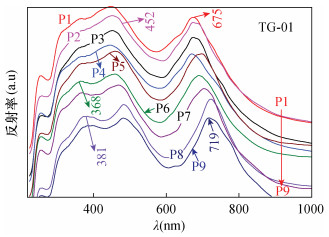
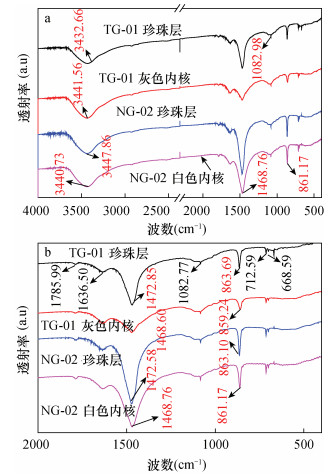
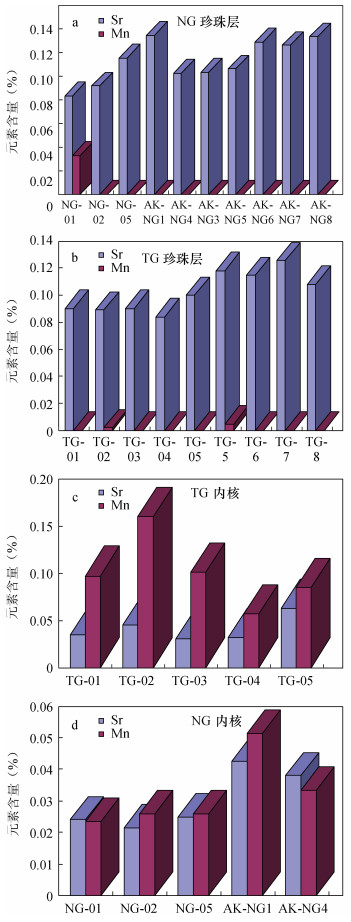
 京公网安备 11010202008159号
京公网安备 11010202008159号